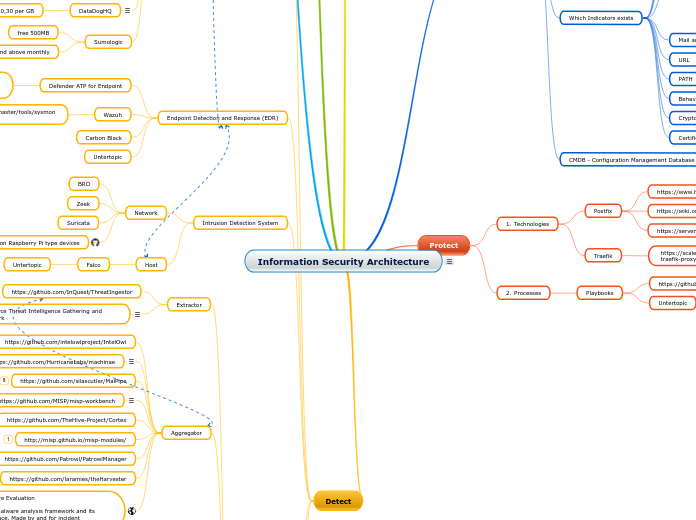Nairobi, Kenya
Nairobi, Kenya has had much recent success financially as well as politically. The growing population makes up numerous organizations and flourishing businesses in the capital of Kenya. Despite being one of the most prominent cities in Africa, Nairobi also faces many of the challenges of poverty stricken cities. With the majority of the population being poor, there are many urban problems which arise because of the inadequate conditions. Discussed throughout this map are various tribulations of Nairobi with possible scenarios which could help advocate the improvements of the unfortunate situations.
Not everything that is faced can be changed, but nothing can be changed until it is faced.
-James Baldwin (1924-1987) African-American writer
*Picture from:
http://www.expatexchange.com/lib_rd.cfm?articleid=2751&networkid=64
*Information from:
http://www.city-data.com/world-cities/Nairobi-Economy.html
Sanitation Issues
Disease and Health Issues
The sanitation issues in the slums of Kiberia, and other slums, result in disease being very prevalent. Kiberia has a population of 2 million people. Between 15-25% of the population of Kiberia has HIV/AIDS. The Ministry of Health is responsible for the health care of the people. Because disease is so prevalent, the largest referral Hospital in East and Central Africa is close to the Kibera slums. Many of the private health facilities are illegal and as a result, malpractice occurs often. Malaria and tuberculosis are prevalent as well. The use of flying toilets leads to many diseases. During the rainy season, the water washes the flying toilets into the areas of homes and children end up swimming in these waters, leading to many diseases, such as typhoid and malaria. According to UN-ECOSOC, 24% of those in slums receive piped water, where 92% of those in non-slum areas receive piped water. Water problems are amongst the most severe issues in the slums of Nairobi.
Bapat, J. D and Desai, S. K. (2003) In United Nations World Water Development
Mara, D. D. (2002) Water, Sanitation and Hygiene for the Health of Developing
Nations. Journal of water and health 5(1): 39-50
*Picture from
http://i165.photobucket.com/albums/u56/franceswoodhams/KNHAENew.jpg
Sanitation in the Slums
Sanitation problems are extremely prevalent in the various slums of Nairobi, including Kibera. The biggest reason as to why sanitation is so poor in these slums is because they are not considered legal to the government of Nairobi. According to the Ministries of Health and Water, in 1983 49% of the Kenyan population received sanitation services. According to UNICEF In 1996 between 45% and 46% received sanitation services. There is one pit latrine for every fifty to five hundred people. Because of this, many residents of slums defecate in plastic bags, referred to as flying toilets. In 2006, one out of three people used flying toilets in Kibera. As far as water goes, most of the people in the slums receive water from the Nairobi River. Additionally, the water pipes that do transfer water move alongside sewage trenches. Additionally, because water is scarce, many of the inhabitants have poor personal hygeine.
United Nations Habitat (2006). A shared vision for hygiene, sanitation and water supply
and a framework for mobilisation of action.
United
*Picture from
http://www.oecd.org/vgn/images/portal/cit_731/19/5/39425690Water1.jpg
Long running issue
Nairobi has had constant problems with sanitation. Much of the problem lies with the fact that Nairobi is located in the wetlands. Drainage is a major issue resulting in improper sanitation. Poor political leadership, mismanagement of resources, and poverty have led to worsening of conditions, which were not very good to begin with. These problems can be solved by a government with more care for the situation. Many of these issues plague only those in the slums. The problems of these slums need to be addressed sooner than later, by an independent source, since the government will not do anything about it. Someday maybe something will be done.
Cities of the World: World Regional Urban Development by Maureen Hays-Mitchell and Donald J. Zeigler
http://www.bpdws.org/bpd/web/d/doc_31.pdf?statsHandlerDone=1
*Picture from
http://www.dianaswednesday.com/2008/06/wetlands/
Crime and Violence
1998 terrorist bombing of the U.S. Embassy office in Nairobi
On August 7, 1998, terrorists bombed the U.S. embassy in Nairobi, Kenya. 224 people were killed and 4,000 were injured. This explosion by a truck bomb was linked to both Osama Bin Laden and Al Qaeda. The event was alarming to the Nairobi population, because not only was the city facing crimes within the population, it was unable to withstand the issues going on in the modern world. Solutions have to be discovered outward, not inward. Of all those killed, 12 were American citizens. The U.S. embassy relocated.
source:
http://www.answers.com/topic/1998-united-states-embassy-bombings
image from:
http://www.bild.de/BILD/news/bild-english/PICTURES/news/2009/01/2009-01-09-us-embassy-attacks/11208839__bomb-explosion-nairobi__MBQF-1231485754,templateId=renderScaled,property=Bild,height=349.jpg
"Nairobbery"
Kenya is listed by the Civil Service Commission as the 15th country with the highest crime in the world. It’s capital, Nairobi, is stricken by so much crime every year that it has been deemed the nickname of “Nairobbery.” In 2001, over one-third of all of Nairobi’s residents experienced some form of robbery. Tourists are common victims of theft- people are robbed in tour buses, on safaris, and walking down the streets in broad daylight. Armed Vehicle hijacking and credit card fraud are both common occurrences.
sources:
http://www.nytimes.com/2001/11/29/world/un-study-says-nairobi-is-inundated-with-crime.html
http://www.unon.org/unoncomplex/security_advice.php
image from:
http://www.smh.com.au/ffximage/2008/01/01/6nairobi_lead_wideweb__470x301,0.jpg
Not a Suitable Place to Live for Most of the Population
Summary
As you can see even though Nairobi is a big city for Africa it is not a suitable place to live for most people but for many it is their only option. Kibera needs land and tenancy rights, more suitable housing, running clean water, electricity for all, health clinics, education, employment, sanitation, security plus much more. All these issues are being addressed to a lesser or greater extent by many organizations including the Churches, UN-Habitat, MSF, AMREF etc. Money is finding its way through from many international organizations including Gates Foundation, Bill Clinton Foundation, all the well known charities and of course the churches both in Africa and internationally.
* Information from http://www.kibera.org.uk/Facts.html
* Picture from
http://www.kslum.org
Living Conditions in Kibera
The living conditions in Kibera are awful and cause a lot of sickness and diease, which also makes Nairobi and unsuitable place to live. The average size of a shack in Kibera is 12ft x 12ft and built with mud walls, screened concrete, a corroded tin roof, and either a dirt or concrete floor. These shacks often house up to 8 or more people and many people sleep on the floor. The monthly rent for these shacks is about 700 Kenyan Shillings, which translates to about $9 here. All the people that live in Kibera are African. There are absolutely no restrooms in Kibera. Residents have to use a hole in the ground that is used by up to fifty other shacks. This causes many people to become sick and disease to spread quickly. Up until very recently Kibera had no water source and residents would have to collect it from the Nairobi dam. The dam water is not clean and this causes typhoid and cholera. Now, however, there are two mains water pipes into Kibera, one from the municipal council and one from the World Bank. Residents who want clean water have to pay 3 Kenya Shillings per 20 liters of water. Also only 20% of Kibera has electricity because electricity costs about 900 Kenyan shillings, which is more than the rent and is not affordable for most residents. There is also not sanitation services in Kibera so the trash just piles up everywhere. Even where the children play. With all the disease in Kibera there are no government run hospital or clinics so many of the residents go untreated or get treat by unqualified physicians. This usually leads to death at a young age.
Information from
http://www.kibera.org.uk/Facts.html
Picture from
http://www.myseveralworlds.com/
Segregation Within Nairobi
Segregation in Nairobi Today
Although racial segregation began it's fast demise in early 1960 and has decreased substantiatlly, segregation still exists in Nairobi, however, this is largely class separation. The racial segregation that influenced residential planning in the past lead to the same patterns of land distribution based on segregation today, but this time it was based on socieconomic status. The rich areas have low density while the poor areas have extremely high density. Western and northwestern areas of the city are largely elite. These areas are less dense than others. These areas are largely multiracial, signifying the loss of racial segregation, Africans and Asians that live here are still the minority though. Although racial segregation has been almost lost, Africans, Asians, and Europeans are remaining in their respective areas.
Information From:
Cities of the World, World Regional Urban Development by Maureen Hays-Mitchell, & Donald J. Zeigler
Work and Home life
Nairobi is a city with substantial rates of poverty, great disparities between rich and poor, and faltering urban services. While under colonial rule the Europeans took the initiative to divide themselves up between administrative functionaries and the elite class of settlers. The elite wanted to remain that way and made sure they held the better occupations while the lower class took any job available to them. They Europeans were in control of the government, the resources and finances of Kenya. The Asians were mostly shopkeepers and merchants while a few others where skilled artisans. If they were fortunate enough to find work, the common laborers were usually the Africans since they worked for minimal pay. They were usually considered to be at the bottom of the totem pole since most of them were unemployed and lived in severe poverty.
Information from:
http://www.ucl.ac.uk/dpu-projects/Global_Report/cities/nairobi.htm
http://www.begakwabega.com/documenti/Nairobi-HabitatReport2003.pdf
The dynamics and implications of residential
segregation in Nairobi
O.A. K’Akumu, W.H.A. Olima
Encyclopedia of twentieth-century African history By Tiyambe Zeleza, Dickson Eyoh
Segregation
Segregation in Nairobi began with the British Colonial rule in the 1800’s. The first settlers were European and they described Nairobi as “white man’s country”. Since the nineteenth and twentieth centuries Nairobi’s neighborhoods have been greatly influenced by the colonial-era segregation. The neighborhoods were divided and were strictly European, Asian and African areas. When Nairobi was divided into east and west hemispheres the higher-elevation sites west of downtown Nairobi was reserved for the Europeans and wealthy Asians while the lowest-lying, least desirable areas east were for the Africans and poor Asians. The Africans were forced to live in the neglected and unwanted areas since they were considered to be the lower class.
Information from
http://www.city-data.com/world-cities/Nairobi-Neighborhoods.html
Asian's and African's
Asians and Africans originally occupied Eastleigh, which is one of Nairobi’s largest neighborhoods, but since they Kenya declared its independence in 1963, the neighborhood became very over populated and primarily an African neighborhood. On the west side of town which used to be for only whites in the past is now an area where all the wealthy residents reside no matter what their ethnicity is. The wealthier neighborhoods are Karen, Langata, Lavington and Westlands. These higher end neighborhoods consist of high quality schools, mini shopping malls and also restaurants. Today there are more neighborhoods that were built to accommodate the growing middle class. Some of these neighborhoods are South C and Buru Buru. Although racial segregation began to fall apart in the 1960’s and has decreased drastically, segregation still exists in Nairobi; however, it has decreased and is not as defined as it once was.
Information from
http://encarta.msn.com/encyclopedia_761576807/nairobi.html
Instability with Housing
Housing and Land Rights
In Nairobi, the capital city of Kenya, 2 million people are crowded onto about 1.5% of the total land area of the city. The majority of these people live in constant fear due to the fact that the land that they live on does not belong to them. Demolution, destruction, or forced eviction are just some of the problems that scare the people of Nairobi.
The reason for these constant threats lies in a government policy which doesn't "recognize the urban informal settlements as inhabited areas" (Bodewes 1). It is seen as free public land that can be used at any time for politically loyal elites. And thus most Kenyans are considered homeless, refugees in their native land.
Nearly all of these Kenyans are denied basic rights because of a corrupt government. When housing cases are brought up in the courts they are usually decided ahead of time based on the party holding title, leaving many hopeless.
*Information from:
http://findarticles.com/p/articles/mi_m1309/is_1_38/ai_80497139/
*Picture from:
http://isferea.jrc.ec.europa.eu/Activities/Applications/PublishingImages/Informal_Settlements/3.jpg
Forced Evictions
Taking place often and without notice the Kenyan government demolishes countless buildings in several of Nairobi's slums. This forces hundreds of thousands of people to be evicted from their homes while also losing their local schools, churches, clinics, shops, etc. The poorest people living in these slums are often never compensated even though they barely making a living in the informal sector with others working small businesses.
*Information from:
http://www.hicnet.org/news.php?pid=407
*Picture from:
http://blog.acumenfund.org/wp-content/uploads/2008/01/Kenya%20-%20Kibera%20situation.jpg
Informal Settlements
In the slums of Kibera, a family's house caves in due improperly constructed sewage and water lines. The government will not be compensating the family because the house was built illegally but the government will relocate others who are in the same danger of losing their home.
*Information from:
http://www.kenyahub.com/kenyan-videos/89-informal+Settlement.html?userid=693
Positives of Nairobi /Nairobi's Future
Nairobi Stock Exchange & Economy
Although the economy is suffering all over the world, Nairobi’s economy has been able to withstand the hardships and continues to be a leader in the stock exchanges not only in Africa but has been ranked in the world’s top 15 stock exchanges in the past. Their stock exchange success is a good indicator of a positive future. Because of their relatively stable economy, it has become one of the most prominent cities in Africa not only in the financial world but in the political aspect as well. Many important companies, including the United Nations Environment Program and the UN Office in Africa are located in Nairobi. Having a stable economy could be the most important factor when predicting future success and Nairobi seems to pass all indications that it will be an important city in the future and will continue to have important, positive contributions to the world.
Information from: http://www.wikinvest.com/wiki/List_of_Stock_Exchanges, http://www.unep.org/Documents.Multilingual/Default.asp?DocumentID=43
Education
Wildlife and Parks
Sports
Tourism









